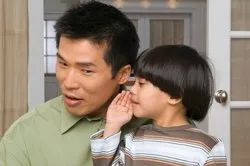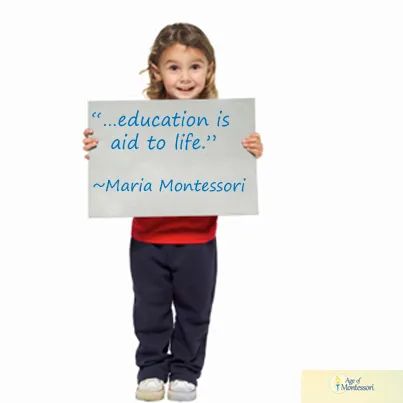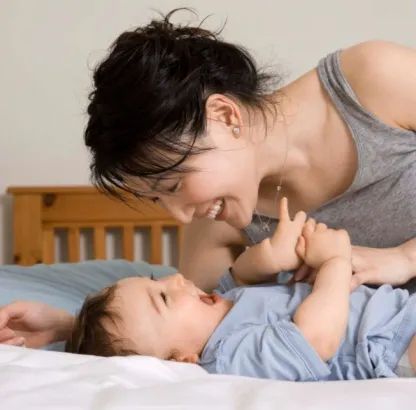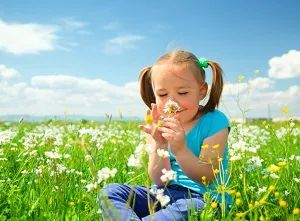Los diez secretos de Montessori - #2 Ayuda a la vida
Esto es la educación, entendida como ayuda a la vida; suya es la nueva y brillante esperanza de la humanidad.
Los diez secretos de Montessori

María Montessori descubrió secretos, diez para ser exactos. Por suerte para nosotros, Mary Ellen Maunz, M. Ed., fundadora y Directora de Programas de Age of Montessori, está dispuesta a compartir el tesoro de información que encierran estos secretos, y a explicar exactamente lo que pueden significar para usted y sus hijos. Con estos diez secretos, usted obtendrá una rica comprensión del marco que subyace al Método Montessori. María Montessori desarrolló algo más que un método educativo revolucionario: descubrió el verdadero funcionamiento interno de la mente del niño. Estos diez secretos se basan en su vida de observación de los niños y en el reconocimiento de lo que realmente necesitan para prosperar.
Secreto número dos: Ayuda a la vida
Ayudar a la vida, dejándola libre... ésa es la tarea básica del educador. - María Montessori

"Esta es la educación, entendida como ayuda a la vida; una educación desde el nacimiento, que alimenta una revolución pacífica y une a todos en un objetivo común, atrayéndolos como a un único centro. Madres, padres, políticos: todos deben unirse en su respeto y ayuda a esta delicada obra de formación, que el pequeño niño lleva a cabo en el fondo de un profundo misterio psicológico, bajo la tutela de un guía interior. Esta es la nueva y luminosa esperanza de la humanidad". - María Montessori
Como puedes ver en su cita anterior, Maria Montessori creía que la educación debía ser "una ayuda para la vida". Pero, ¿qué quería decir realmente Montessori cuando llamaba a la educación "una ayuda para la vida"? Muchos padres y profesores piensan en las "tres erres"(lectura,escriturayaritmética) cuando piensan en educación. Los montessorianos estarían sin duda de acuerdo en que estos fundamentos académicos son habilidades esenciales para la vida, pero también entienden que se puede obtener mucho más a través del proceso de aprendizaje. Los niños pueden aprender (y aprenden) las habilidades necesarias para pensar y actuar de forma independiente y creativa a través del movimiento, la comunicación y el desarrollo sensorial.
El desarrollo del niño sigue un camino de etapas sucesivas de independencia, y nuestro conocimiento de esto debe guiarnos en nuestro comportamiento hacia él. Tenemos que ayudar al niño a actuar, querer y pensar por sí mismo. Este es el arte de servir al espíritu, un arte que sólo puede practicarse a la perfección cuando se trabaja entre niños. ~Maria Montessori
Movimiento
Desde el momento en que nacen, el movimiento pone a los niños en contacto con el mundo que les rodea.

Desde el momento en que nacen, el movimiento pone a los niños en contacto con el mundo que les rodea. A medida que el niño aprende el movimiento, no sólo desarrolla el control muscular (o control motor), sino que también experimenta la expansión neuromuscular. El objetivo de educar al niño en el movimiento es guiarlo hacia aquellas actividades que ayudan a organizar y coordinar el movimiento. Cuando un niño tiene dirección, sus movimientos se centran y, como describió Montessori, "crece tranquilo y contento, y se convierte en un trabajador activo, un ser tranquilo y lleno de alegría." Esto se ha observado una y otra vez en las aulas Montessori de todo el mundo.
Los niños vienen al mundo predispuestos a aprender idiomas.

Comunicación
Los niños vienen al mundo predispuestos a aprender idiomas. Como dijo Maria Montessori: "Hablar está en la naturaleza del hombre". Esta tendencia innata hace que la adquisición del lenguaje sea especialmente fácil para los niños menores de seis años. Muy pronto, los niños aprenden a utilizar expresiones faciales, gestos y el habla para comunicar sus necesidades básicas. Ya a los dos años, el deseo natural del niño de comunicarse le guiará hacia el aprendizaje de la lectura y la escritura. Dado que el desarrollo del lenguaje está tan profundamente entrelazado con el desarrollo físico e intelectual del niño, es primordial una amplia exposición al lenguaje.
Desarrollo sensorial
"La educación... no se adquiere escuchando palabras, sino con experiencias sobre el entorno".

El aprendizaje sensorial empieza al nacer (quizá incluso antes). A través de sus sentidos, los niños se desarrollan rápidamente absorbiendo grandes cantidades de información nueva tan fácilmente como una esponja absorbe el agua. Como su nombre indica, el aprendizaje sensorial se produce a través de los cinco sentidos: vista, oído, olfato, gusto y tacto. El aprendizaje sensorial no sólo ayuda a afinar los nuevos sentidos en ciernes del niño, sino que también prepara el cerebro para las lecciones académicas venideras, como las matemáticas, las ciencias y otras.
La observación científica ha establecido que la educación no es lo que da el maestro; la educación es un proceso natural llevado a cabo espontáneamente por el individuo humano, y se adquiere no escuchando palabras sino mediante experiencias sobre el entorno. ~Maria Montessori
"Ayudar a la vida" significa ayudar y alimentar el crecimiento natural del niño, mental y físicamente. Esto sólo puede lograrse comprendiendo las etapas de desarrollo del niño y proporcionándole el entorno y los materiales didácticos adecuados para cada etapa.
Para aprender más sobre las etapas del desarrollo, únete al curso online de 6 semanas de Age of Montessori, Curso de Desarrollo Infantil.




















